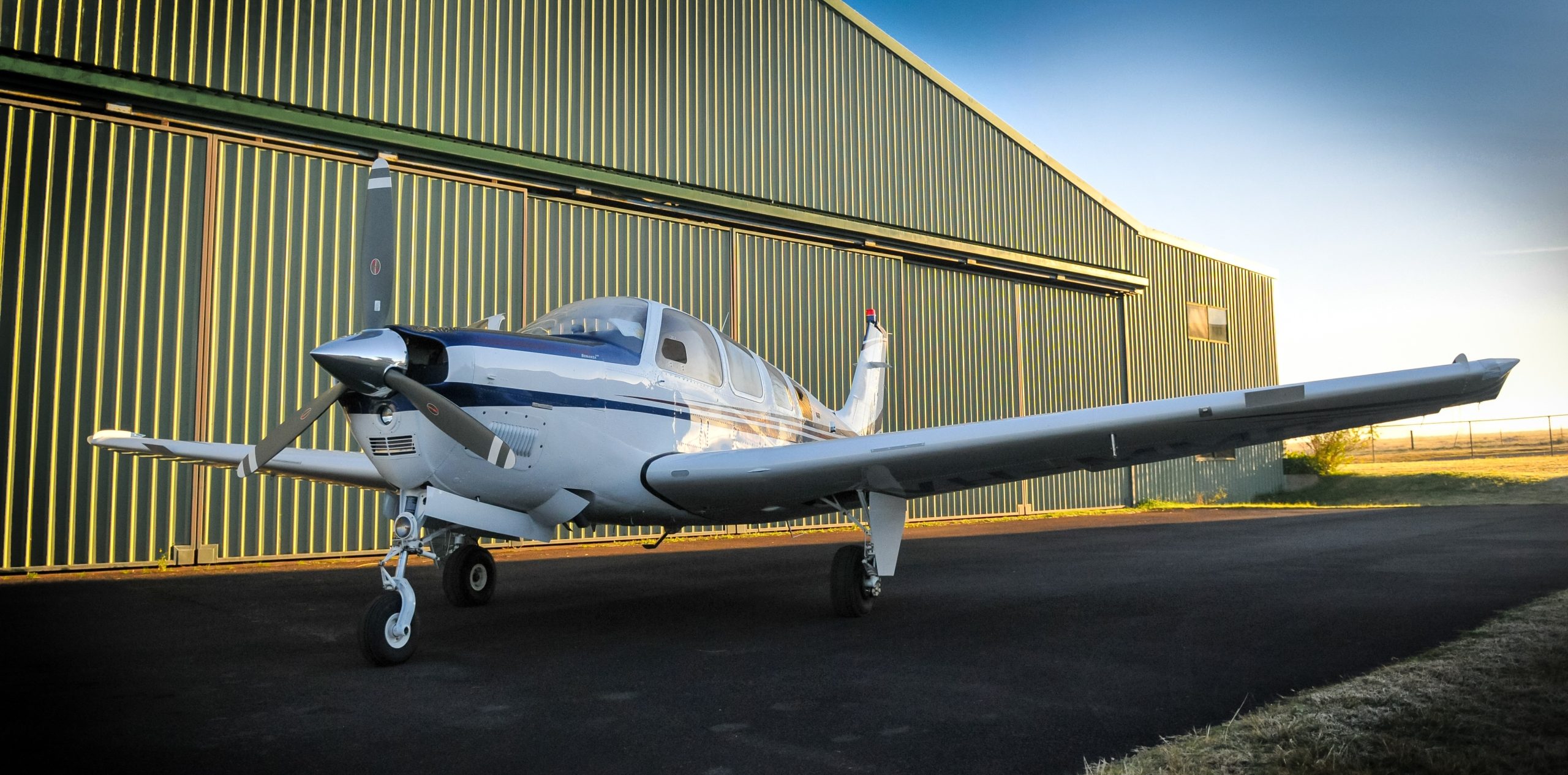Today, I would like to recap Monday’s post on the aircraft engine cooling system and go over some typical questions you will likely see on your FAA Private Pilot knowledge test. First off, we learned about the effects of operating with an excessively high aircraft engine temperature and that it can lead to loss of power, excessive oil consumption, detonation, and serious engine damage. Neither of which are ideal situations when 6,000 in the air. That is why a thorough understanding of the aircraft engine and cooling system is required knowledge for any pilot. Understanding how your engine cools will help you to prevent operating outside of normal temperature ranges.
Most light aircraft engines are cooled externally by air. For internal cooling and lubrication, an engine depends on circulating oil. Engine lubricating oil not only prevents direct metal-to-metal contact of moving parts, it also absorbs and dissipates part of the engine heat produced by internal combustion. If the engine oil level is too low, an abnormally high engine oil temperature indication may result.
On the ground or in the air, excessively high engine temperatures can cause excessive oil consumption, loss of power, and possible permanent internal engine damage.
If the engine oil temperature and cylinder head temperature gauges have exceeded their normal operating range, or if the pilot suspects that the engine (with a fixed-pitch propeller) is detonating during climb-out, the pilot may have been operating with either too much power and the mixture set too lean, using fuel of too low a grade, or operating the engine with not enough oil in it. Reducing the rate of climb and increasing airspeed, enriching the fuel mixture, or retarding the throttle will help cool an overheating engine. Also, rapid throttle operation can induce detonation, which may detune the crankshaft.
The most important rule to remember in the event of a power failure after becoming airborne is to maintain safe airspeed. Now let’s go ahead and take a look at some sample knowledge test questions complete with explanations.
Excessively high engine temperatures, either in the air or on the ground, will
A. increase fuel consumption and may increase power due to the increased heat.
B. result in damage to heat-conducting hoses and warping of cylinder cooling fans.
C. cause loss of power, excessive oil consumption, and possible permanent internal engine damage.
High engine temperatures can lead to loss of power, excessive oil consumption, detonation, and serious engine damage.
If the engine oil temperature and cylinder head temperature gauges have exceeded their normal operating range, the pilot may have been operating with
A. the mixture set too rich
B. higher-than-normal oil pressure.
C. too much power and with the mixture set too lean.
Excessively high engine temperatures can result from insufficient cooling caused by too lean a mixture, too low a grade of fuel, low oil, or insufficient airflow over the engine.
Answer (A) is incorrect because a richer fuel mixture will normally cool an engine. Answer (B) is incorrect because high oil pressure does not cause high engine temperatures.
For internal cooling, reciprocating aircraft engines are especially dependent on
A. a properly functioning thermostat.
B. air flowing over the exhaust manifold.
C. the circulation of lubricating oil.
Oil, used primarily to lubricate the moving parts of the engine, also cools the internal parts of the engine as it circulates.
Answer (A) is incorrect because most air-cooled aircraft engines do not have thermostats. Answer (B) is incorrect because, although air-cooling is important, internal cooling is more reliant on oil circulation. Air cools the cylinders, not the exhaust manifold.
An abnormally high engine oil temperature indication may be caused by
A. the oil level being too low.
B. operating with a too high viscosity oil.
C. operating with an excessively rich mixture.
Oil, used primarily to lubricate the moving parts of the engine, also helps reduce engine temperature by removing some of the heat from the cylinders. Therefore, if the oil level is too low, the transfer of heat to less oil would cause the oil temperature to rise.
Answer (B) is incorrect because the higher the viscosity, the better the lubricating and cooling capability of the oil. Answer (C) is incorrect because a rich fuel/air mixture usually decreases engine temperature.
What action can a pilot take to aid in cooling an engine that is overheating during a climb?
A. Reduce rate of climb and increase airspeed.
B. Reduce climb speed and increase RPM.
C. Increase climb speed and increase RPM.
To avoid excessive cylinder head temperatures, a pilot can open the cowl flaps, increase airspeed, enrich the mixture, or reduce power. Any of these procedures will aid in reducing the engine temperature. Establishing a shallower climb (increasing airspeed) increases the airflow through the cooling system, reducing high engine temperatures.
Answer (B) is incorrect because reducing airspeed hinders cooling, and increasing RPM will further increase engine temperature. Answer (C) is incorrect because increasing RPM will increase engine temperature.





